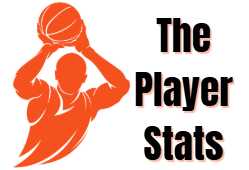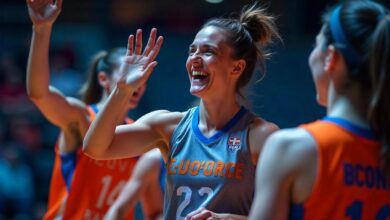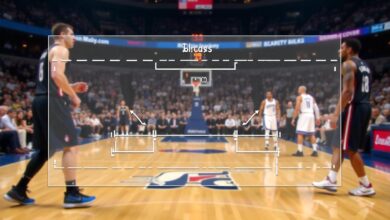The Dream Reborn: Rebuilding Paths in the WNBA

The WNBA, often hailed as the premier women’s basketball league in the world, is known for its fierce competition, dynamic athletes, and passionate fan base. However, for many teams, success does not come easily, and the road to championship glory is often long and challenging. Among the most fascinating stories in professional sports are those of teams undergoing significant rebuilds, as they shift from the depths of mediocrity or failure to new heights. One of the most compelling examples in recent years is the Atlanta Dream, a team that has gone through a transformation to rebuild its roster, all with an eye on the future.
In the context of rebuilding teams like the Atlanta Dream, a large part of the journey revolves around making strategic decisions during the draft and investing in youth development. The goal is to build a solid foundation for sustained success, not just for a season, but for years to come. This article explores how teams like the Dream and others approach rebuilding through these critical avenues and examines the importance of player development and drafting in shaping their future.
Contents
Rebuilding Through the Draft
When a team like the Atlanta Dream finds itself in the midst of a rebuilding phase, the WNBA draft becomes one of the most powerful tools available. The draft offers teams the chance to inject fresh talent into their rosters, often serving as a way to bring in new stars that can shape the future of the franchise. For the Dream, the importance of the draft has been magnified in recent years as the team works to regain its competitive edge after a period of underperformance.
In 2020, the Atlanta Dream had the number 3 overall pick in the WNBA Draft, and they used it wisely by selecting Chennedy Carter, a dynamic guard from Texas A&M. Carter’s ability to score, her court vision, and her tenacity made her a potential cornerstone of the franchise. However, the Dream’s rebuilding efforts were hampered by a lack of consistency, injuries, and external factors such as coaching changes. Yet, Carter’s selection exemplifies how teams can use the draft to add key pieces that could eventually lead to a resurgence.
Similarly, Aari McDonald, drafted by the Dream in 2021, brings a wealth of promise as a fast, versatile guard with defensive prowess. Her ability to make plays both offensively and defensively, combined with her high basketball IQ, gives the Dream the potential to develop into a much more competitive team over the years.
Drafting high-potential talent is just one part of the puzzle. Teams must also build a solid roster with complementary pieces that can develop into strong contributors over time. This is particularly important for a team like the Dream, which is not just looking for immediate success but long-term sustainability.
Youth Development and Player Development
While the draft is critical in infusing new talent into a team, the way that talent is nurtured and developed is just as crucial. Player development in the WNBA goes beyond simply coaching a player on their offensive and defensive skills; it also involves shaping their mindset, leadership qualities, and ability to work as part of a team. This is an area in which the Dream have been putting significant focus as they look to build a foundation for success.
One of the key aspects of the Dream’s rebuild is their investment in the development of young players. Atlanta’s approach to player development involves not only on-court training but also ensuring that their players can thrive in a professional environment. This includes developing leadership skills, helping players build confidence, and enabling them to excel within the team’s system.
Nia Coffey and Tianna Hawkins, while not rookies, have been essential players for the Dream in terms of development. Coffey, a versatile forward, has been a steady presence on both ends of the court. Her work ethic and commitment to improving her skills have made her a key contributor to the team’s development. Hawkins, similarly, has become an integral part of the squad, showcasing her ability to stretch the floor and provide scoring punch.
Additionally, young players like Naz Hillmon, who joined the Dream in 2022, exemplify the type of player development the team has focused on. Hillmon’s combination of size, skill, and basketball IQ gives the Dream a potential star in the making. The Dream’s coaching staff has worked to help Hillmon grow both as a scorer and a defender, with a particular focus on developing her leadership abilities on the court. The investment in young players like Hillmon is a long-term strategy aimed at building a strong, sustainable team.
The Atlanta Dream vs Indiana Fever: A Glimpse of the Rebuilding Process
One of the most telling matchups of rebuilding teams in the WNBA is the faceoff between the Atlanta Dream and the Indiana Fever. Both teams have been in the process of rebuilding, with the goal of developing young talent and reshaping their rosters for future success. While these matchups are often marked by the youth and energy of emerging stars, they also serve as an important barometer for the progress each team has made in its rebuilding efforts.
In a recent game between the two teams, several players stood out with their performances, giving fans a glimpse of the future. For the Dream, Chennedy Carter had a solid outing, contributing 18 points, 4 assists, and 3 rebounds. Carter’s ability to create her own shot and her speed in transition were on full display, showing why she is such a key part of the team’s future. Alongside her, Aari McDonald was also instrumental, adding 12 points and 5 assists. Her defensive tenacity and ability to lead the offense demonstrated the potential that the Dream’s backcourt has for years to come.
On the other side, the Indiana Fever had standout performances from their young core, notably NaLyssa Smith, who had 20 points and 10 rebounds. Smith’s ability to dominate inside and her improving outside shooting were critical to the Fever’s competitiveness in the game. Meanwhile, Destiny Henderson, a rising star for the Fever, contributed 14 points and 6 assists, showing the growth of the team’s young players.
The game highlighted the future of both franchises, with the Dream relying heavily on their youth development, while the Fever showcased the talent they’ve invested in through the draft and player development. It was a competitive matchup, but one that underscored the patience required when rebuilding a team and the optimism surrounding both franchises’ futures.
Conclusion: The Road Ahead
Rebuilding a WNBA team is never a straightforward process. It requires strategic decisions in the draft, a long-term commitment to player development, and a clear vision for the future. For teams like the Atlanta Dream, the process is ongoing, with an emphasis on youth, potential, and growth. As the Dream continue to develop their young players and build a strong team culture, the franchise is well-positioned for success in the years to come.
Through the WNBA draft, smart acquisitions, and a commitment to player development, teams like the Dream are not just building for the present, but for a brighter future in the league. The path to success may be long, but with the right pieces in place, the dream of championship glory is far from out of reach.





